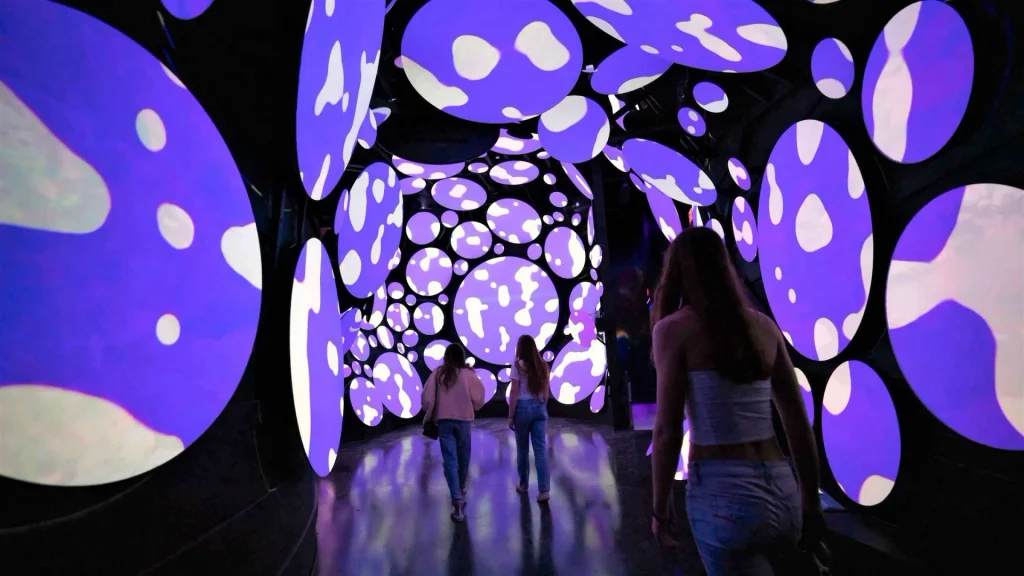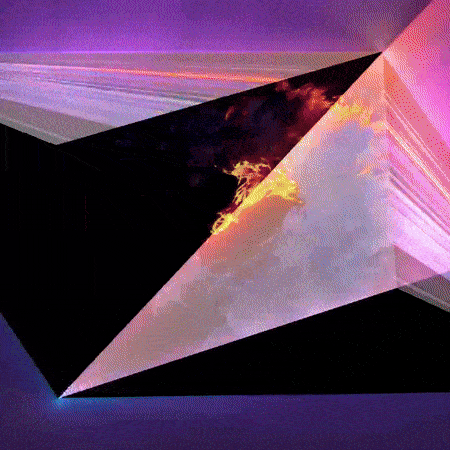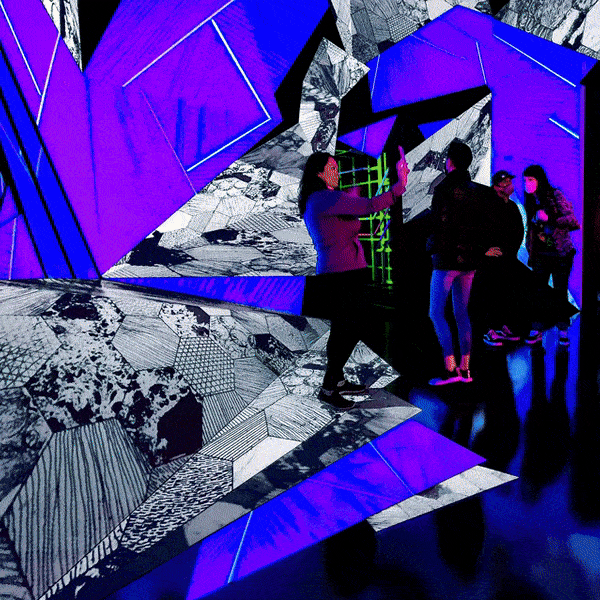
FRACTURE
(iteration 1, Texture and Pattern), 2020
projection on wood
17’10” x 17’3″ x 19’2″ (543.5 x 525.8 x 584.2 m)
New Media Installation
ROLE
Artist / Designer / Tech
COMMISSIONED BY
LOCATION
Houston, TX
SCHEDULE
4 months
DATE
Opened Dec, 2020
⭐ Updated Nov, 2021
SERVICES
Conceptual Development
Schematic Design
️ Design Development
Construction Drawings
Systems Design & Spec.
️ Server Assembly & Setup
️ Curation
Content Sourcing
Motion Graphics
Sound Design
Installation
✨Projection Mapping
Remote Mgmt.
BUDGET
$ ##,###
FABRICATION
SPECIAL THANKS
Dave Prez
Dave Carry
John Anselmo
Boston Kassidy
LORE
An alien tool for pattern analysis, broken in the crash, has become a fracture in spacetime. The machine endlessly samples and remixes realities, reducing each to their abstracted colors and patterns as they are shattered, mixed, and filtered through the screen shards that surround the room.
A kind of automated creativity emerges from the broken system’s generative pairing. Is the machine still searching and learning, or has it found peace in its eternal dreaming?
SAMPLE LIBRARY
The permanent installation and platform for video art continuously generates original content by pairing two randomly selected files from a collection of still images and videos. The visual content of these two files are
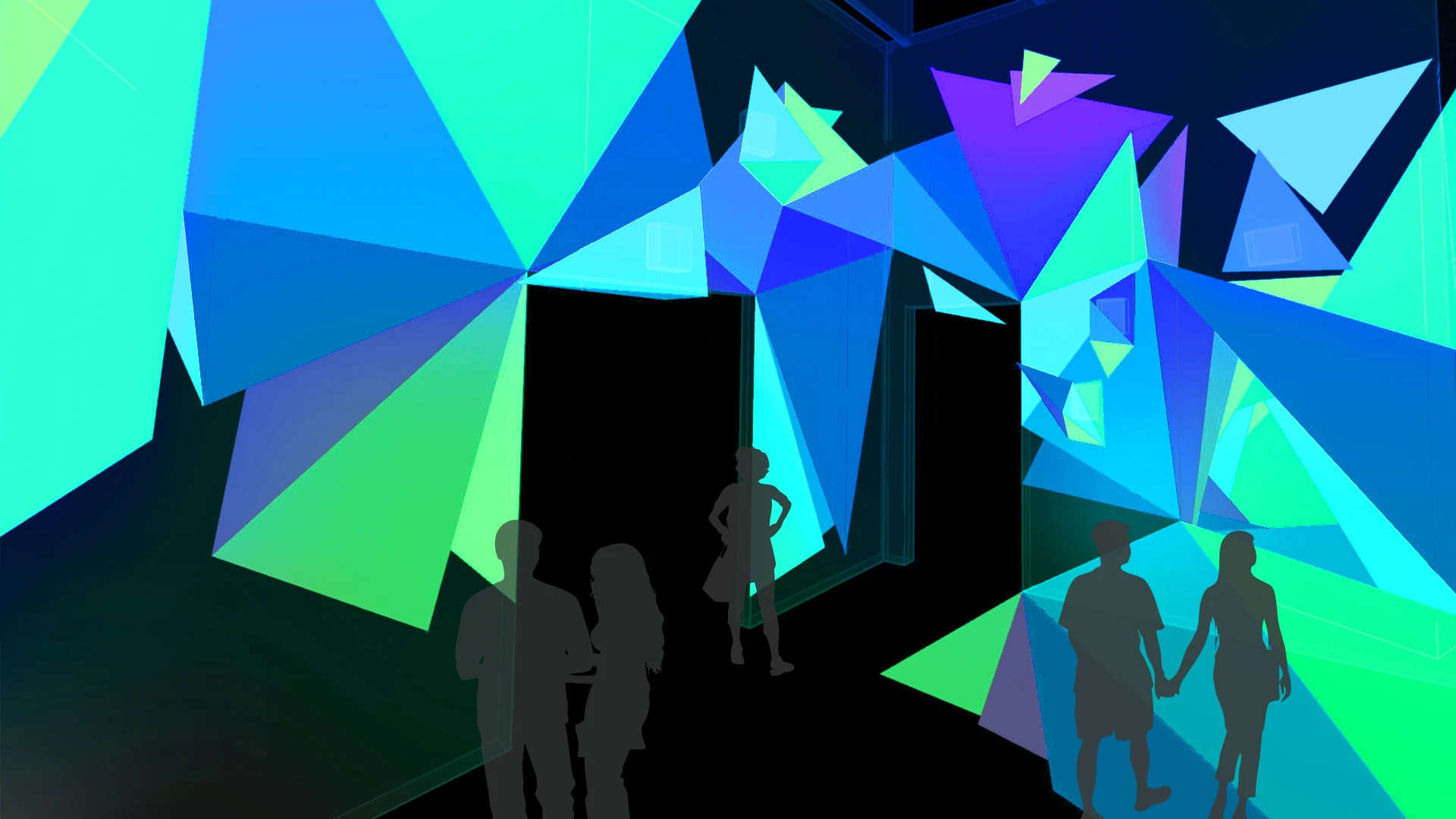
[ Previsualization ]
[ Content “mashup” previsualization (gif) ]
[ Content “mashup” previsualization (20:00) ]
” Okay, I can’t tell what’s real anymore. “
– anonymous viewer
[ Mockup of “Nested Layers” focal point. Content: Ange Wood ]
INSPIRATION
– How the hell do you come up with this stuff?
FRACTURE evolved from a sculptural exploration in the VideoFormsseries. The series consisted of twelve classifications of physical forms and arrangements – my practice’s evolving equivalent to the platonic solids. The classifications provided a framework for serially exploring combinations of projected video and physical forms.
The classification from which arose was #2: Planes. The image that was chosen to represent this classification, and directly inspired the sculptural focal point of the room is shown below.
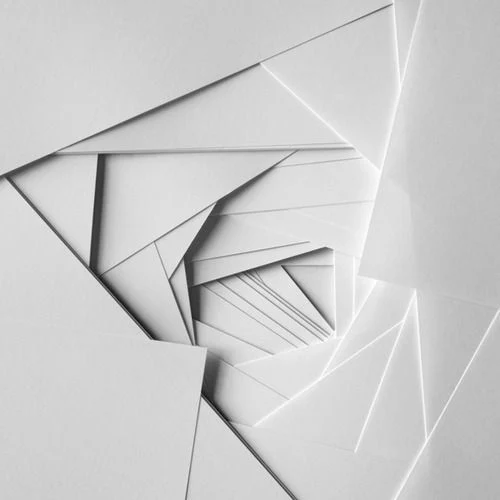
CONCEPTUAL DEVELOPMENT
While the image above set the project in motion and provided a the inspiration for the central sculptural moments in FRACTURE, the concept for the rest of the room emerged from a simple design motive; create a projection installation based on triangular facets. Many other projection works utilize triangles, but failed somehow in embracing the inherent flatness of video media.
The idea of a fractured surface offered a visual design language that could be used to explore three-dimensional compositions of shards of video, and provide infill between the focal points.
NOTIONS of a NEURAL NETWORK
AI tools weren’t around when FRACTURE was originally designed in 2020. Recently however, tools like StableDiffusion have become part of my ideation and design process since then. I have been revisiting older projects with these tools to to provide some high fidelity visual examples of what I had imagined FRACTURE might eventually look like.
DESIGN DEVELOPMENT
FRACTURE was a challenging but fun piece to design. The basic layout had projectors tucked away in the center of each wall, aiming outward to cover half of each flanking wall. Implementing this arrangement on all four walls created full coverage of the room.
While in theory this was a simple strategy, in practice the design process quickly became far more complicated. Each time a projector or projection surface was moved there were downstream effects on other projectors and surfaces. Moving a projector upward to account for a door might block the throw of another projector and reduce the projection coverage area on another wall. Multiply that type of problem by eight, and each adjustment cascaded and compounded into an endless feedback loop of readjustment.
It felt like solving a Rubik’s cube (which I can do), or designing a stellarator (which I have not done). Everything was in the way of something else, and the only solution was very complex and weirdly particular.
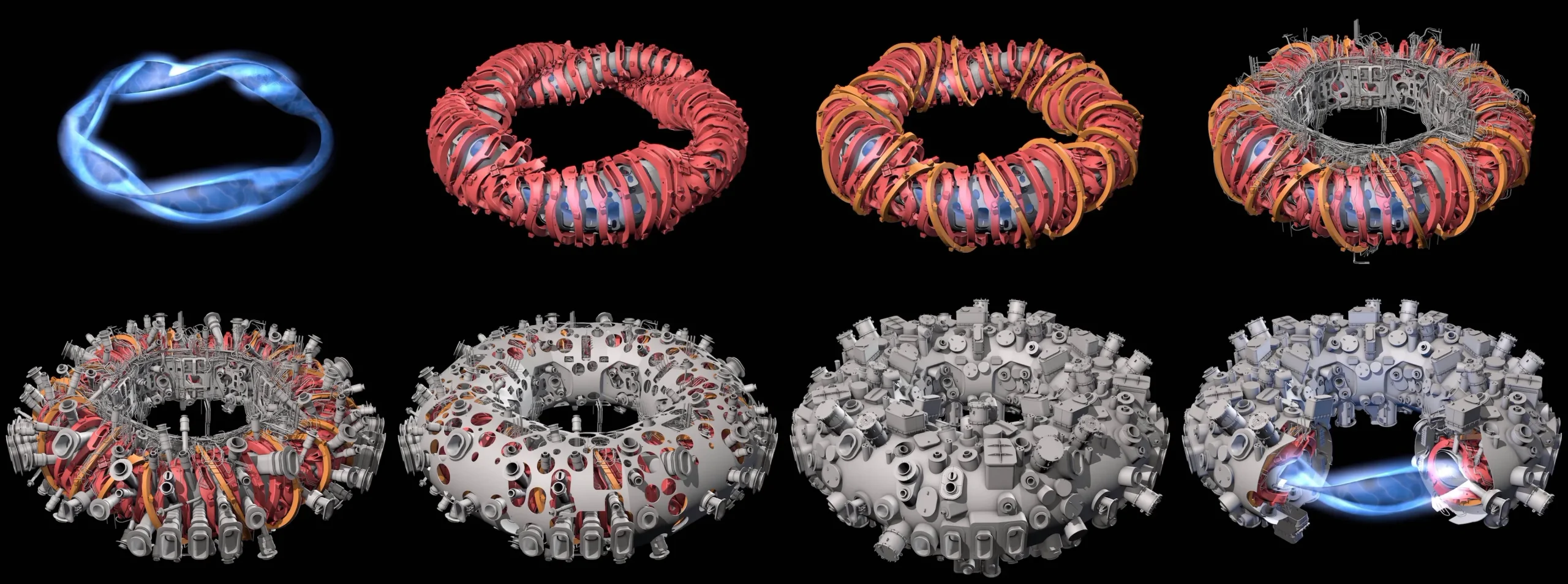
[ Diagram of the complex interplay between layers of technology of the Wendelstein 7-X stellarator ]
Luckily, the aforementioned triangular facet design logic was highly flexible. Portions of projector and panel groups could be moved together as a group, and the triangular facets in between could be easily adjusted.
Eventually, after many cycles of cascading adjustments, the design of FRACTURE came to rest. Now, how the heck were we going to build it?
[ Layout of all of the panels that make up FRACTURE ]


[ Projection mapping output configuration ]
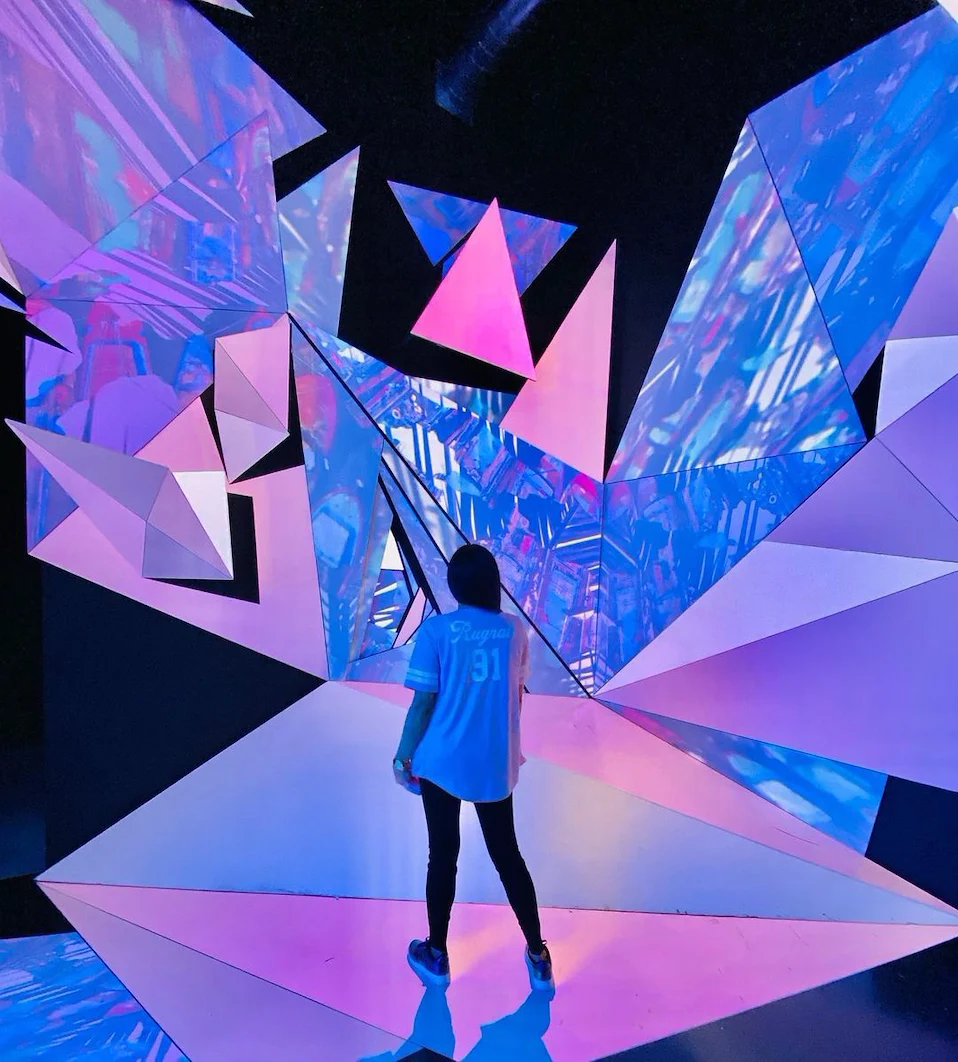
[ Photo: yessica_noemy ]
” My mind is racing all the time—like ADHD all over the place—but I walk in here . . . and I feel . . . peace. I’ve literally never felt that. ”
– anonymous viewer



